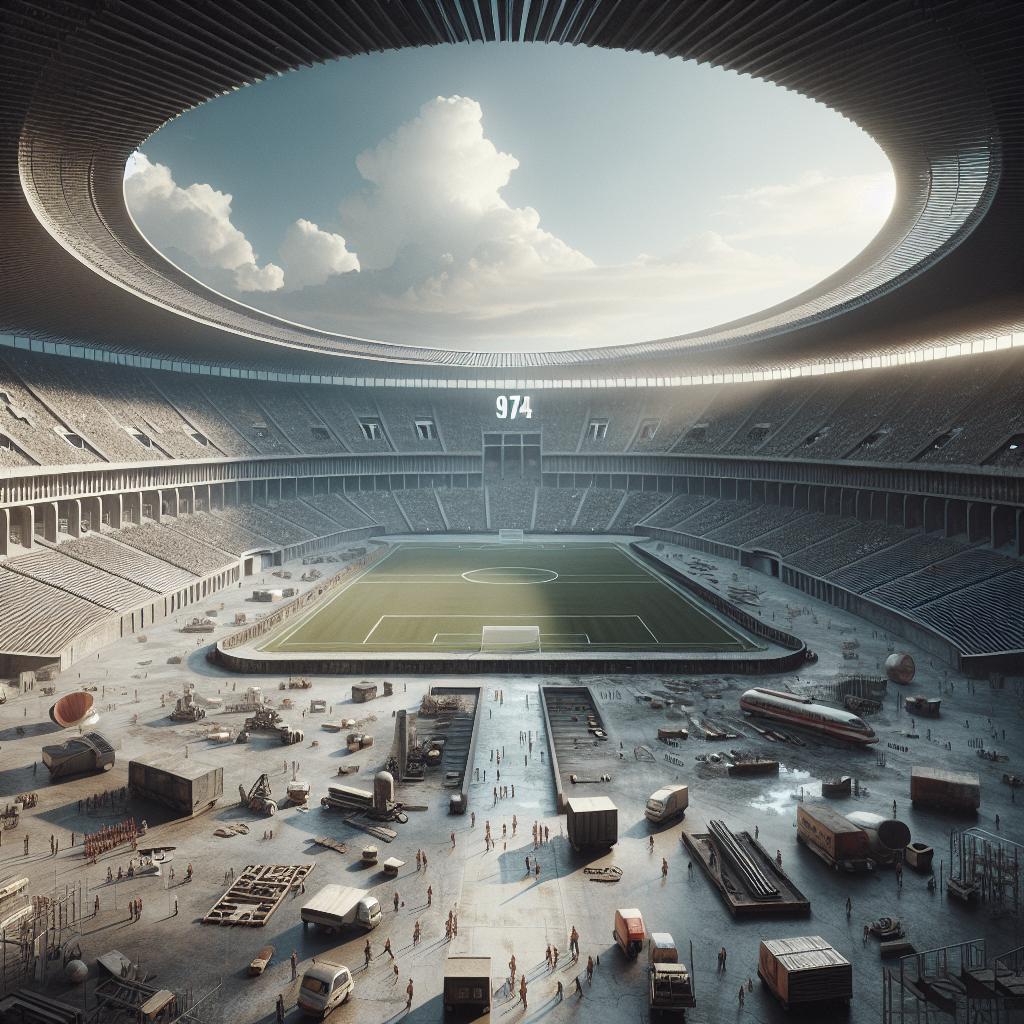« `html
Stadium 974 is nothing short of a modern engineering marvel located in Doha, Qatar. It is widely recognized for its innovative design, committed to sustainability and inspired by the country’s thriving maritime history. In this article, we will explore the unique aspects of Stadium 974, examine its innovative architecture, and delve into its environmental impact. We will also take a closer look at its role in the 2022 FIFA World Cup and the future prospects of this state-of-the-art and sustainable structure. Through each segment, the impressive synthesis of creativity and purpose that defines Stadium 974 will become evident, as well as why it stands as a benchmark for future stadium designs worldwide.
What is Stadium 974?
Stadium 974, previously known as Ras Abu Aboud Stadium, is an architectural landmark in Qatar specifically designed for the 2022 FIFA World Cup. True to its name, the stadium incorporates exactly 974 shipping containers into its construction. These repurposed containers serve as a crucial element of the modular design, not only giving the stadium its distinct appearance but also establishing it as a pioneer in sustainable architecture.
Located on the waterfront of Doha’s West Bay, Stadium 974 is more than just a sports venue; it is a symbol of innovation. Designed by Fenwick Iribarren Architects, this stadium is configured to be entirely dismantled after the World Cup, thereby reducing construction waste and repurposing materials for future projects. This makes Stadium 974 the first fully demountable covered football stadium in history.
The Architecture of Stadium 974
The architecture of Stadium 974 is both stunning and effective, drawing inspiration from Qatar’s long maritime tradition and international commerce. The use of shipping containers is a nod to global trade, while also offering an efficient, quick, and cost-effective building solution. Each container has been thoughtfully employed to house elements such as parts of the stadium’s roof, restrooms, and snack kiosks, making for a dynamic, integrated experience.
The stadium’s modular design not only reduces the resources used in construction but also showcases a fresh architectural aesthete. This approach defies the opulent and excessive designs typical in sports arenas, opting instead for a pragmatic yet visually striking design that intelligently utilizes materials. The entire structure is an impressive representation of both sustainable building and contemporary style, illustrating a leap forward in how stadiums can be conceived and constructed.
Commitment to Sustainability
Sustainability is at the heart of Stadium 974’s design and operation. Beyond the use of repurposed shipping containers, the stadium thrives on a minimal-carbon footprint design. Its low energy requirements and capacity for disassembly mean that far fewer raw materials are wasted, signaling a clear commitment to environmental responsibility. Furthermore, its proximity to public transportation systems reduces the ecological impact typically associated with event-related travel.
In addition, Stadium 974 has been constructed with environmentally friendly practices, aiming for global certification in sustainable building standards. Materials for the construction were sourced responsibly, and innovative water conservation and recycling technologies are in place to further enhance the stadium’s green credentials. This focus on sustainability not only marks a first for World Cup venues but sets a precedent for sports infrastructure globally.
Stadium 974 in the 2022 FIFA World Cup
Stadium 974 was one of the pivotal venues during the 2022 FIFA World Cup, hosting a number of high-stakes matches. This unique stadium not only provided a spectacular backdrop for thrilling football moments but also prompted global viewers to consider sustainable solutions in large-scale international events. The experience for players and fans alike was unlike any other, owing to the unexpected aesthetics and extraordinary atmosphere.
Despite being a temporary structure, Stadium 974’s role in the World Cup was nothing short of monumental. It not only showcased Qatar’s innovative spirit on the world stage but also emphasized the potential of eco-friendly approaches. Long after the final whistle blew, Stadium 974 remains a paradigm of future-forward thinking in sports venue construction and management.
The Future of Stadium 974
Looking to the future, Stadium 974’s legacy will likely endure far beyond its physical dismantling. Its methodology of temporary architecture and innovation sets new benchmarks for future stadium designs. As cities worldwide seek sustainable building solutions, Stadium 974 serves as a valuable case study for how to combine design efficiency with ecological mindfulness.
Once disassembled, the components of Stadium 974 can be reused for various purposes — from stadium construction in other regions to smaller-scale community projects. This flexibility and reusability present compelling arguments for similar approaches to future sporting events, where temporary structures might offer both environmental sensibility and cost efficiency.
Summary of Key Points
| Aspect | Description |
|---|---|
| Introduction | Overview of Stadium 974’s innovative design, sustainability, and impact on future architecture. |
| What is Stadium 974? | Explanation of the stadium’s concept, its location, and its modular construction with 974 shipping containers. |
| The Architecture of Stadium 974 | Description of the architectural inspiration and execution, emphasizing modular design and sustainability. |
| Commitment to Sustainability | Focus on the stadium’s eco-friendly initiatives and practices in construction and operation. |
| Stadium 974 in the 2022 FIFA World Cup | Role and significance of the stadium during the World Cup, highlighting its unique advantages. |
| The Future of Stadium 974 | Discussion on the potential use of the stadium’s components post-dismantling and its legacy in sustainable architecture. |
« `
